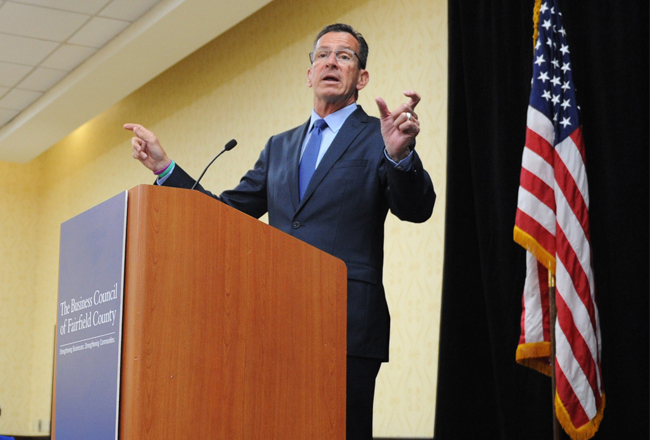The Connecticut State Colleges and Universities system on April 6 easily pushed through what its president, Mark Ojakian, termed an “operational consolidation” plan designed to save the system some $41 million a year. But while its Board of Regents easily approved the “Students First” proposal by a 12-0 vote ”“ William McGurk abstained ”“ many educators within CSCU, including members of its Faculty Advisory Committee, believe that the approval was won a little too easily.
“In the biggest decision that has ever come before the Board of Regents, the FAC is shocked at the lack of specificity in President Ojakian”™s ”˜Students First”™ proposal, and the lack of transparent deliberation that went into passing it,” the group said in a statement issued in the wake of the approval. “The FAC expects to have representatives from the FAC on all implementation teams, and that all impacted CSCU stakeholders and personnel will also be represented.”
The Faculty Advisory Committee was created by the legislature to advise both the Board of Regents and the legislative committees that deal with higher education matters. Its members are elected by the 17 campuses in the CSCU system.
The committee stressed that it did not necessarily disagree with the contents of the new plan, but with the way in which it was handled.
“As a (nonvoting, ex-officio) member of the Board of Regents and its Finance Committee, I can confirm that the Finance Committee, while it did vote on tuition increases, did not consider the proposed $41 million cuts in CSCU that are contained in the ”˜Students First”™ plan or the idea of consolidation of the community colleges,” said Barbara Richards, professor of sociology at Housatonic Community College in Bridgeport. “Also, the Executive Committee of the Board of Regents has not had a meeting in which the agenda referred to such a plan.”
Ojakian”™s “Students First” plan would consolidate operations at 12 community colleges into one centralized office while also eliminating some administrative personnel, which he maintains will provide annual savings of about $28 million. Additional consolidations at all 17 colleges and universities in the system designed to streamline purchasing, information technology, human resources and other departments would realize another $13 million in annual savings, according to the plan.
In an open letter to the CSCU community, Ojakian wrote that the system”™s state funding has declined by 12.4 percent over the past several years, noting that 41 percent of its total revenue comes from state appropriations. “We are facing at least a $35 million decrease for the next fiscal year and that assumes $700 million in labor savings,” he wrote. “It has become abundantly clear that our operational costs are outpacing our revenues creating a true structural deficit.”
Ojakian was not available for further comment, but CSCU Communications Director Maribel La Luz said that the system faces not just a $35 million deficit this year, but an additional $60 million shortfall next year.
“This is a long-term strategy,” La Luz said. “We don”™t want to just keep cutting budgets the way it”™s been done in the past.”
La Luz said that, as he has stressed in the past, Ojakian was careful to collect feedback before moving ahead with “Students First.”
“It was really important for him that, in order to move forward, he make sure that the learning experience and environment not be compromised,” she said. “The feedback we got from students showed, ”˜We got it. Budgets are decreasing, so we”™re willing to pay more (tuition), but we don”™t want our services cut.”™”
The Board of Regents approved a two-year tuition increase along with the consolidation. In-state tuition in each of the next two school years will increase by 4 percent at the four regional state universities and by 2.5 percent at the state”™s 12 community colleges. Out-of-state tuition will remain the same. The tuition increases are estimated to add $15.3 million in the next fiscal year, with $11.5 million coming from the four state universities ”“ Eastern, Southern, Central and Western in Danbury.
Although presidents at Fairfield-based Western Connecticut and Housatonic did not respond to inquiries, Norwalk Community College President David Levinson said that he understood the need for the consolidations.
“I think this is a very positive direction” to move in, he said. “The successive cuts we”™ve received over the years have had a detrimental effect on our ability to service our students. This plan puts the students first.”
Levinson said he understood the FAC”™s objections to how the proposal was handled, but reiterated that the students”™ needs had to be the first consideration. As for potential staff cuts at Norwalk, he said he was still waiting to hear details.
Richards, saying that she was speaking as a professor and not on behalf of the FAC, said that “Community colleges are by nature tied to their communities. They tailor programs to meet the needs of those communities, and have intimate ties with local businesses, political leaders, K-12 schools and neighborhoods. They have foundations that are supported by their communities. Their presidents are chosen through an exhaustive process, including participation by the community. It would be a shame to remove the local identity of the colleges by centralizing leadership in Hartford.”
In addition, she said: “Community colleges are the main pathway to future job opportunities for low-income people and people of color in our state. The proposal for disproportionate cuts to these colleges would, in my opinion, undermine the economic prospects of Connecticut. I hope that legislators will consider that higher education is an investment, not a temporary service.”
Ojakian”™s plan calls for implementation to begin on July 1. “That”™s not a lot of time,” Levinson said, “but it underscores the urgency of the situation.”
La Luz emphasized that July 1 was the proposed starting date of the implementation. “Not everything is going to be ready by then,” she said.
In keeping with Ojakian”™s philosophy of gathering feedback from all parties, he is in the midst of a tour of all 17 campuses. The tour began on April 11 at Tunxis Community College in Farmington and ends on May 4 at Housatonic Community College in Bridgeport.
Additional dates are:
- Monday, April 17, at 9 a.m. ”“ Norwalk Community College
- Tuesday, April 18 at 1 p.m. ”“ Asnuntuck Community College
- Wednesday, April 19 at 9 a.m. ”“ Southern Connecticut State University
- Wednesday, April 19 at 1 p.m. ”“ Gateway Community College
- Thursday, April 20 at 9 a.m. ”“ Western Connecticut State University
- Monday, April 24 at 9 a.m. ”“ Northwestern Community College
- Monday, April 24, at 1 p.m. ”“ Naugatuck Valley Community College
- Tuesday, April 25 at 9 a.m. ”“ Middlesex Community College
- Tuesday, April 25 at 1 p.m. ”“ Central Connecticut State University
- Wednesday, April 26 at 9 a.m. ”“ Quinebaug Valley Community College
- Wednesday, April 26 at 1 p.m. ”“ Three Rivers Community College
- Thursday, April 27 at 9 a.m. ”“ Capital Community College
- Thursday April 27 at 1 p.m. ”“ Eastern Connecticut State University
- Monday, May 1, at 9 a.m. ”“ Charter Oak Community College
- Thursday, May 4 at 1 p.m. ”“ Housatonic Community College



















